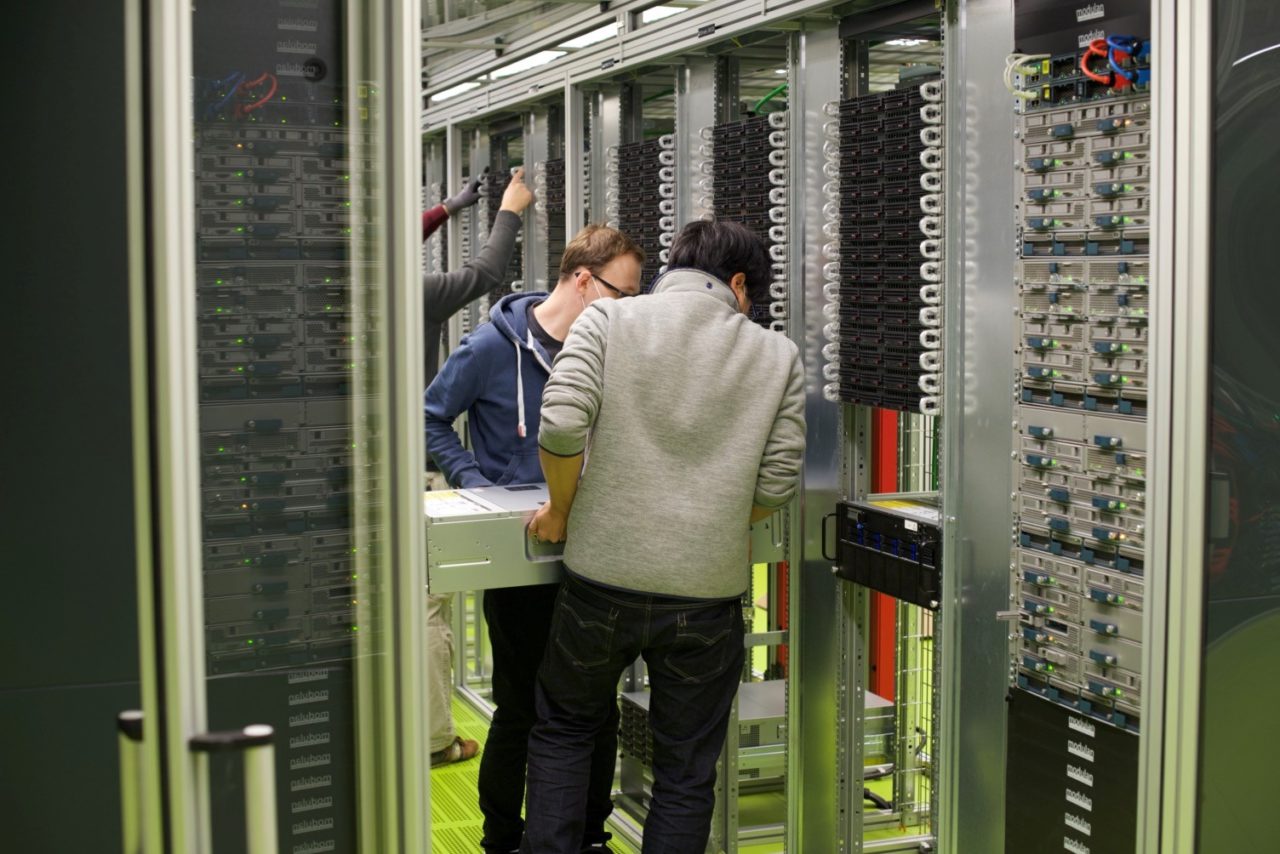NVIDIA is collaborating with clinical organizations across Europe to bring AI to the point of care, bolstering clinical pathways with efficiency gains and new data dimensions that can be included in medical decision-making processes.
The University Hospital Essen, in northwestern Germany, is one such organization taking machine learning from the bits to the bedside — using NVIDIA technology and AI to build smart hospitals of the future.
Jens Kleesiek and Felix Nensa, professors at the School of Medicine of the University of Duisburg Essen, are part of a four-person team leading the research groups that established the Institute for Artificial Intelligence in Medicine (IKIM). The technology developed by IKIM is integrated with the IT infrastructure of University Hospital Essen.
IKIM hosts a data annotation lab, overseen by a team of board-certified radiologists, that accelerates the labeling of anatomic structures in medical images using MONAI, an open-source, PyTorch-based framework for building, training, labeling and deploying AI models for healthcare imaging.
MONAI was created by NVIDIA in collaboration with over a dozen leading clinical and research organizations, including King’s College London.
IKIM researchers also use self-supervised learning to pretrain AI models that generate high-quality labels for the hospital’s CT scans, MRIs and more.
Additionally, the IKIM team has developed a smart hospital information platform, or SHIP, an AI-based central healthcare data integration platform and deployment engine. The platform is used by researchers and clinicians to conduct real-time analysis of the slew of data in university hospitals — including medical imaging, radiology reports, clinic notes and patient interviews.
SHIP can, for example, flag an abnormality on a radiology report and notify physicians via real-time push notifications, enabling quicker diagnoses and treatments for patients. The AI can also pinpoint data-driven associations between healthcare metrics like genetic traits and patient outcomes.
“We want to solve real-world problems and bring the solutions right into the clinics,” Kleesiek said. “The SHIP framework is capable of delivering deep learning algorithms that analyze data straight to the clinicians who are at the point of care.”
Plus, increased workflow efficiency — enabled by AI — means increased sustainability within hospitals.
Making Hospitals Smarter
Nensa says his hospital currently has close to 500 IT systems, including those for hospital information, laboratories and radiology. Each consists of critical patient information that’s interrelated — but data from disparate systems can be difficult to connect or draw machine learning-based insights from.
SHIP connects the data from all such systems by automatically translating it into a description standard called fast healthcare interoperability resources, or FHIR, which is commonly used in medicine to exchange electronic health records. SHIP currently encompasses more than 1.2 billion FHIR.
Once converted to FHIR, the information can be easily accessed by data scientists, researchers and clinicians for real-time AI training and analysis based on NVIDIA GPUs and DGX A100 systems. This makes it possible for labor-intensive tasks, such as liver volumetry prior to living donor liver transplantation or bone age estimation in children, to be performed fully automatically in the background, instead of requiring a half-hour of manual work by a radiologist.
“The more artificial intelligence is at work in a hospital, the more patients can enjoy human intelligence,” Nensa said. “As AI provides doctors and nurses relief from repetitive tasks like data retrieval and annotation, the medical professionals can focus on what they really want to do, which is to be there and care for their patients.”
NVIDIA DGX A100 systems power IKIM’s AI training and inference. NVIDIA Triton Inference Server enables fast and scalable concurrent serving of AI models within the clinic.
The IKIM team also uses NVIDIA FLARE, an open-source platform for federated learning, which allows data scientists to develop generalizable and robust AI models while maintaining patient privacy.
Smarter Equals Greener
In addition to reducing physician workload and increasing time for patient care, AI in hospitals boosts sustainability efforts.
As a highly specialized medical center, the University Hospital Essen must be available year-round for reliable patient treatment, with 24-hour operation times. In this way, patient-oriented, cutting-edge medicine is traditionally associated with a high consumption of energy.
SHIP helps hospitals increase efficiency, automating tasks and optimizing processes to reduce friction in the workflow — which saves energy. According to Kleesiek, IKIM reuses the energy emitted by GPUs in the data center, which also helps to make the University Hospital Essen greener.
“NVIDIA is providing all of the layers for us to get the most out of the technology, from software and hardware to training led by expert engineers,” Nensa said.
In April, NVIDIA experts hosted a workshop at IKIM, featuring lectures and hands-on training on GPU-accelerated deep learning, data science and AI in medicine. The workshop led IKIM to kickstart additional projects using AI for medicine — including a research contribution to MONAI.
In addition, IKIM is building SmartWard technology to provide an end-to-end AI-powered patient experience in hospitals, from service robots in waiting areas to automated discharge reports.
For the SmartWard project, the IKIM team is considering integrating the NVIDIA Clara Holoscan platform for medical device AI computing.
Subscribe to NVIDIA healthcare news and watch IKIM’s NVIDIA GTC session on demand.
Feature image courtesy of University of Duisburg-Essen.
